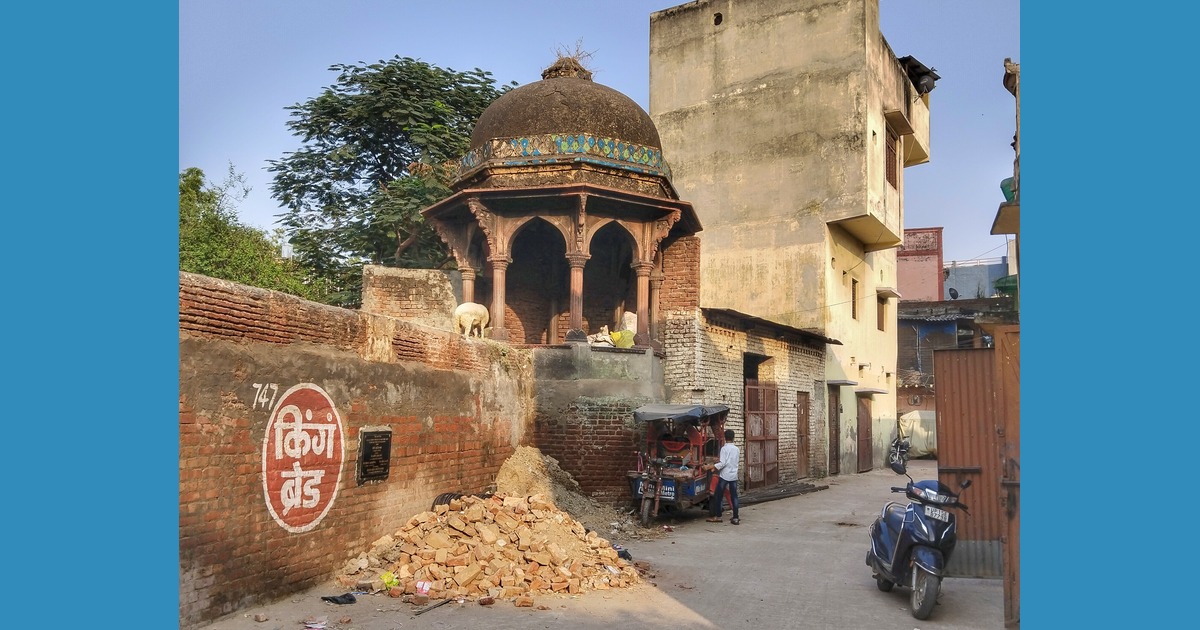
A new white marble structure in Agra, which took 104 years to complete, is attracting hordes of spiritually inclined tourists. Located about 12 km from the iconic Taj Mahal, the Soami Bagh mausoleum is being hailed as a rival to the world-renowned Mughal-era monument. Many visitors are in awe of its grandeur and architectural brilliance, considering it a worthy addition to Agra's historical landscape.
A Testament to Faith and Dedication
The Soami Bagh mausoleum is dedicated to the founder of the Radhasoami faith, Param Purush Pooran Dhani Swamiji Maharaj. Built on a foundation of 52 wells, the 193-foot tall structure is made entirely of white marble from Makrana in Rajasthan. Unlike the Taj Mahal, which was constructed in 22 years under the rule of Mughal Emperor Shah Jahan, the Soami Bagh mausoleum was built over a century by devoted followers in an open society.
Pramod Kumar, a follower of the faith, emphasized, "The construction of the mausoleum was a testament to the unwavering faith, fervour, and dedication of its creators."
Architectural and Historical Background
The original samadh at Soami Bagh was a simple white sandstone structure. In 1904, an architect from Allahabad designed a new mausoleum. Though work was delayed for several years, construction resumed in 1922 and has continued ever since. Artisans have worked painstakingly, with generations of families dedicating their lives to this monumental task. The architectural design of Soami Bagh blends a variety of styles, creating a unique and harmonious aesthetic.
Modern Techniques Meet Traditional Craftsmanship
Today, the mausoleum stands as a blend of traditional craftsmanship and modern technology. Huge grinders, cutters, finishers, and cranes have facilitated the construction process, while the artistry remains as meticulous as ever. An official connected with the project stated, "Now of course we have huge grinders, cutters, finishers, lorries, lifters, and all kinds of machines and computer technology, all of which were employed to advantage here, and the results show."
Challenges and Triumphs
The construction of the Soami Bagh mausoleum faced numerous challenges, including difficulties in sourcing high-quality marble. Quarries in Mount Abu and Udaipur were leased, and semi-precious stones for inlay work were procured from riverbeds across India. Labour shortages, particularly due to skilled masons migrating to Gulf countries, also hampered progress.
Despite these obstacles, the mausoleum features a 31.4-foot gold-plated pinnacle, taller than that of the Taj Mahal, mounted with the help of a crane from Delhi.
A Growing Attraction
Busloads of tourists visit the Soami Bagh mausoleum daily, drawn by its exquisite craftsmanship and spiritual significance. While the entrance is free, photography is not permitted. The mausoleum has become a center for soul healing and solace, attracting the spiritually inclined.
Though the sponsors of Soami Bagh deny any intention of rivalling the Taj Mahal, visitors can't help but compare the two. As one official noted, "It is a form of worship that has been going on and will go on relentlessly."
A Rival to the Taj Mahal?
While the Taj Mahal remains a symbol of eternal love and architectural grandeur, the Soami Bagh mausoleum is carving out its own niche as a spiritual and architectural marvel. Its combination of faith-driven dedication and artistic excellence ensures that it stands as a significant landmark in Agra, prompting many to ponder whether the city now has a worthy rival to its most famous monument.
Popular Categories
Read More Articles
Travel and Tourism
Meerut’s vanishing heritage: Why its mughal treasures are crumbling away by Mohammed M. Raza November 19, 2025Business
Hafele Valeriya Dishwasher: The New Standard in Kitchen Hygiene by Awadh 360° Desk November 14, 2025Entertainment
Banaras gave me the notes, Bhatkhande polished them: Bhojpuri singer Sarita Tiwari by Awadh 360° Desk November 10, 2025Travel and Tourism
Statue of Unity Sets New Tourist Footfall Record as PM Modi Hails Vallabhbhai Patel's Legacy by Awadh 360° Desk October 31, 2025



